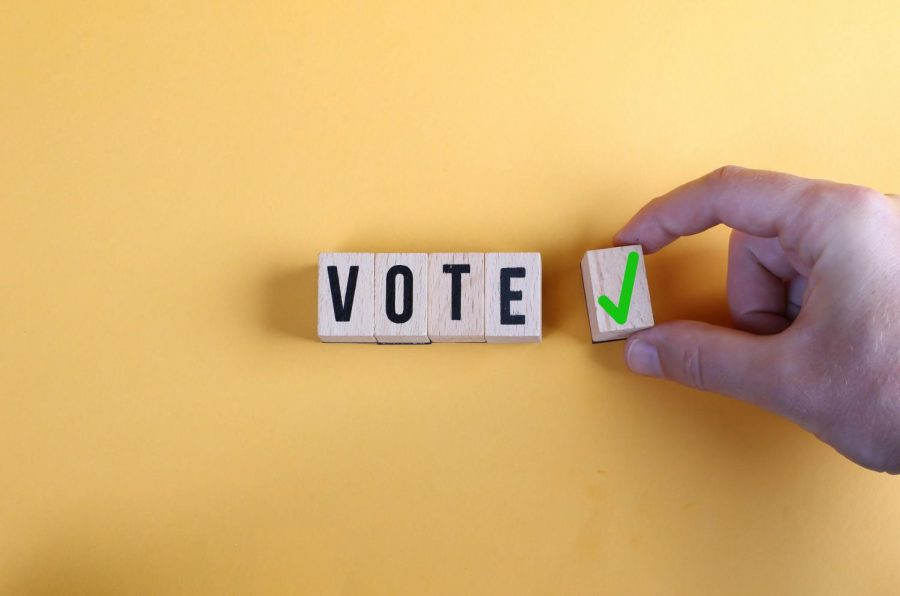Students can make a change by voting in NYC local elections
April 22, 2021
Major city government positions will be on the ballot in New York City’s 2021 elections, making it more important than ever for students to get involved and vote.
Local elections tend to not get the same kind of mainstream attention from voters as presidential elections when, in fact, local elections have more of an immediate impact on the voter’s life.
This year, New Yorkers are voting for mayor and comptroller, as well as city council members and borough presidents in each of the five boroughs. Each of these leadership positions carries importance, as they make decisions that influence the future of New York City.
With the impact of the COVID-19 pandemic and calls for racial justice, this city election stands out and voters have the chance to elect the candidates who vow to address the issues that matter most to them.
There are many big seats up for grabs this year and upfront is choosing a candidate to take Mayor Bill de Blasio’s place, who has reached his term limit and will be stepping down.
The mayor is the city government’s leader and has the responsibility to set the city’s agenda. The elected official can choose what city projects or initiatives to prioritize in various sectors like education, jobs, housing, public safety and criminal justice.
Importantly, the mayor drafts the city budget, which, as of January, serves 8.4 million residents and is $92 billion, The City reported.
Leaders of every city agency like the New York City Police Department and the Department of Education are chosen by the mayor. Also, the mayor can approve or veto bills passed by the City Council.
Currently, the mayoral race has 14 candidates, all coming from various backgrounds and making the promise of being most fit to lead New York City post-pandemic.
Another high-stakes office up for grabs is the comptroller, who is the city’s chief financial officer and oversees City Hall’s budget, making all executive decisions on how the budget is allocated toward various areas like unemployment, small businesses and homelessness.
“The comptroller sets rules for how the city spends its money and conducts audits and reports to make sure that they are followed,” according to the New York City Campaign Finance Board.
Whoever follows Comptroller Scott Stringer, who is term-limited and running for mayor, will have the vital task of guiding the economic recovery of New York City. Currently, 14 candidates are running in the comptroller race.
Brooklyn, the Bronx, Staten Island and Manhattan will all be getting new borough presidents, who act as advocates and representatives for the communities within their borough. In Queens, the current borough president must rerun to keep his position, but voters can also choose between two other candidates running against him.
The race for the next borough president of Brooklyn has 14 candidates, the Bronx has six candidates, Staten Island has nine candidates and Manhattan has eight candidates.
Each borough has a president who can push forward the needs of their borough in areas like education, public safety and housing.
According to the New York City Campaign Finance Board, “5% of the city budget (about $4 billion) is set aside so that borough presidents can fund organizations in their boroughs.”
Many other positions on the ballot like city council members and public advocate have strong roles in changing various aspects of New York City life.
As college students with other obligations, it can be difficult to cast a vote, however, there are means like mail-in absentee ballots that are created to work around different individuals’ schedules.
This year, all registered voters can request an absentee ballot to be mailed to them and the deadline to do so is June 15. Also, in-person early voting begins on June 12. The primary is set for June 22 and the general election is set for Nov. 2.
A new voting method, called ranked-choice voting, will be implemented in this year’s election, which means voters might need to do some research on the candidates before heading to the polls.
“This popular electoral system allows voters to rank candidates by preference, meaning they can submit ballots that list not only their first-choice candidate for a position, but also their second, third and so on,” according to Time magazine.
It can be overwhelming to follow the various races, hundreds of candidates and make a plan to vote, but it’s important to do as students because it can lead to change in everyday life.







